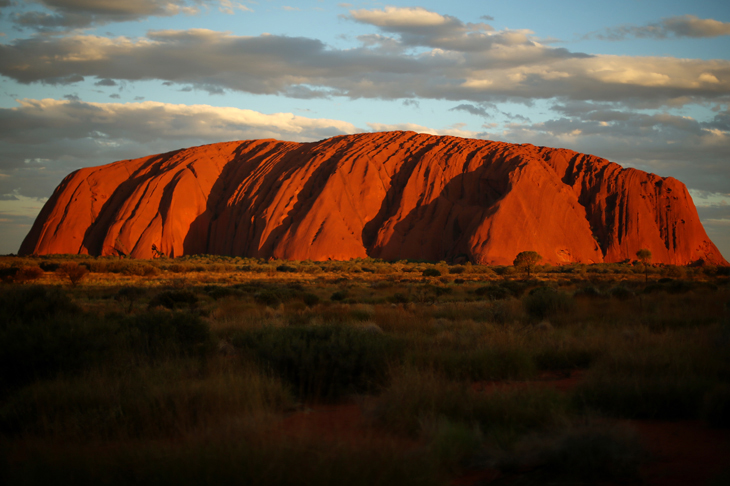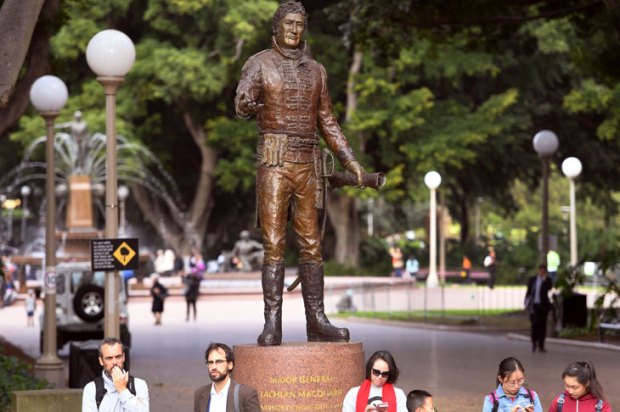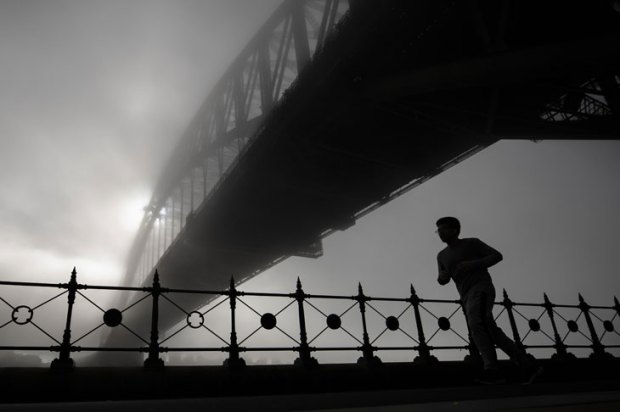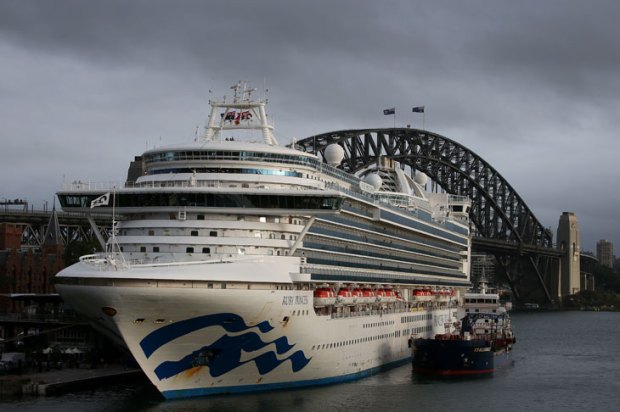If you still haven’t got around to making a New Year’s resolution, why not make one you won’t be able to make at the start of any subsequent year? Why not make 2019 the year you finally get around to climbing Uluru. Because if you don’t do that before October, when it will become illegal, you’ll die wondering what all the fuss was about – much as I feel about LSD, Grand Theft Auto and colonic irrigation. Of course, as the sign at the base of the rock warns, if you attempt to climb it with a heart condition you might still die wondering. But what a way to go! Visitors who are daunted by this sign – or by the one which reminds you how culturally insensitive you are for even thinking about climbing – can take a dawn or dusk shuttlebus to a patch of de-spinifexed sand a few kilometres away to watch it go from orange to black or vice versa. But comparing this utterly passive and hugely anti-climactic experience to the adrenalin-fuelled, fist-pumping euphoria of scrambling up those massive, vertiginous sandstone flanks and gazing out across the desert like a breathless, sweating Sphinx, is like comparing watching a documentary about the Great Barrier Reef to diving into it.
The imposition of the ban will be the keeping of a promise made by the Northern Territory government to the local Pitjantjatjara people should the proportion of visitors who attempt the climb fall below 20 per cent. In the last few years it has fallen to 16 per cent, apparently, but what’s not clear is how many didn’t climb for reasons of political correctness, and how many didn’t because they visited on a day when the path was closed off due to ‘bad weather’, as it was on both the days last year when I was there with my children – cloudless skies and the complete absence of wind notwithstanding. More importantly, perhaps, it’s not clear how many foreign tourists who chose not to climb were unaware of the controversy prior to their arrival and only decided not to after being confronted with the aforementioned signs and lectured by the resort guides. My guess is quite a lot, and I can’t help thinking that when climbing Uluru is officially, permanently, legally out of bounds many future visitors to our shores won’t include a trip to The Red Centre in their itinerary. But I’m sure the people who’ve campaigned so hard for so long for the ban have thought about this, and I’m sure a substantial reduction in visitor numbers to this unique and astonishing place – and in the revenues and employment those visitors have generated for the local community – is a small price to pay for maintaining its spiritual integrity.
Some who support the ban justify it by saying ‘How would Londoners like it if tourists were allowed to walk on the dome of St Paul’s Cathedral?’ I happen to be in London as I write this, and it occurs to me that since Islam is the only religion which has much sway here these days, most Londoners would care if Christopher Wren’s masterpiece were made accessible in this way no more than most Sydneysiders care about the Bridge Climb. Indeed, those you might expect to put up the stiffest resistance , the Anglican clergy, would probably welcome the project as a way of augmenting dwindling church attendance figures.
Cultural institutions must adapt in order to survive, and the more exalted and conspicuous those institutions, the greater the need to adapt. The French and Russian monarchies paid a high price for complacency. The British Royal family, by contrast, could teach Bear Grylls a thing or two about survival. In the last hundred years alone, the compromises ‘the firm’ has made to ensure its continuance include changing its (German) name, agreeing to pay income tax, and reversing long-held opinions about Catholics, commoners and American divorcees. But perhaps HM the Queen’s greatest concession to populism was her agreement in 1993 to open Buckingham Palace up to the public on weekends. An event which, in addition to bolstering her stock with her subjects, also provided the Murdoch tabloid press with one of its all-time best front-page headlines: ER indoors.
Got something to add? Join the discussion and comment below.
Get 10 issues for just $10
Subscribe to The Spectator Australia today for the next 10 magazine issues, plus full online access, for just $10.
You might disagree with half of it, but you’ll enjoy reading all of it. Try your first month for free, then just $2 a week for the remainder of your first year.















Comments
Don't miss out
Join the conversation with other Spectator Australia readers. Subscribe to leave a comment.
SUBSCRIBEAlready a subscriber? Log in